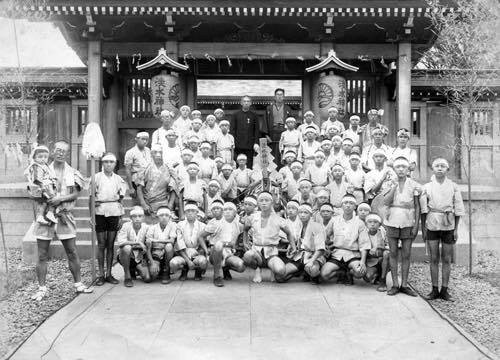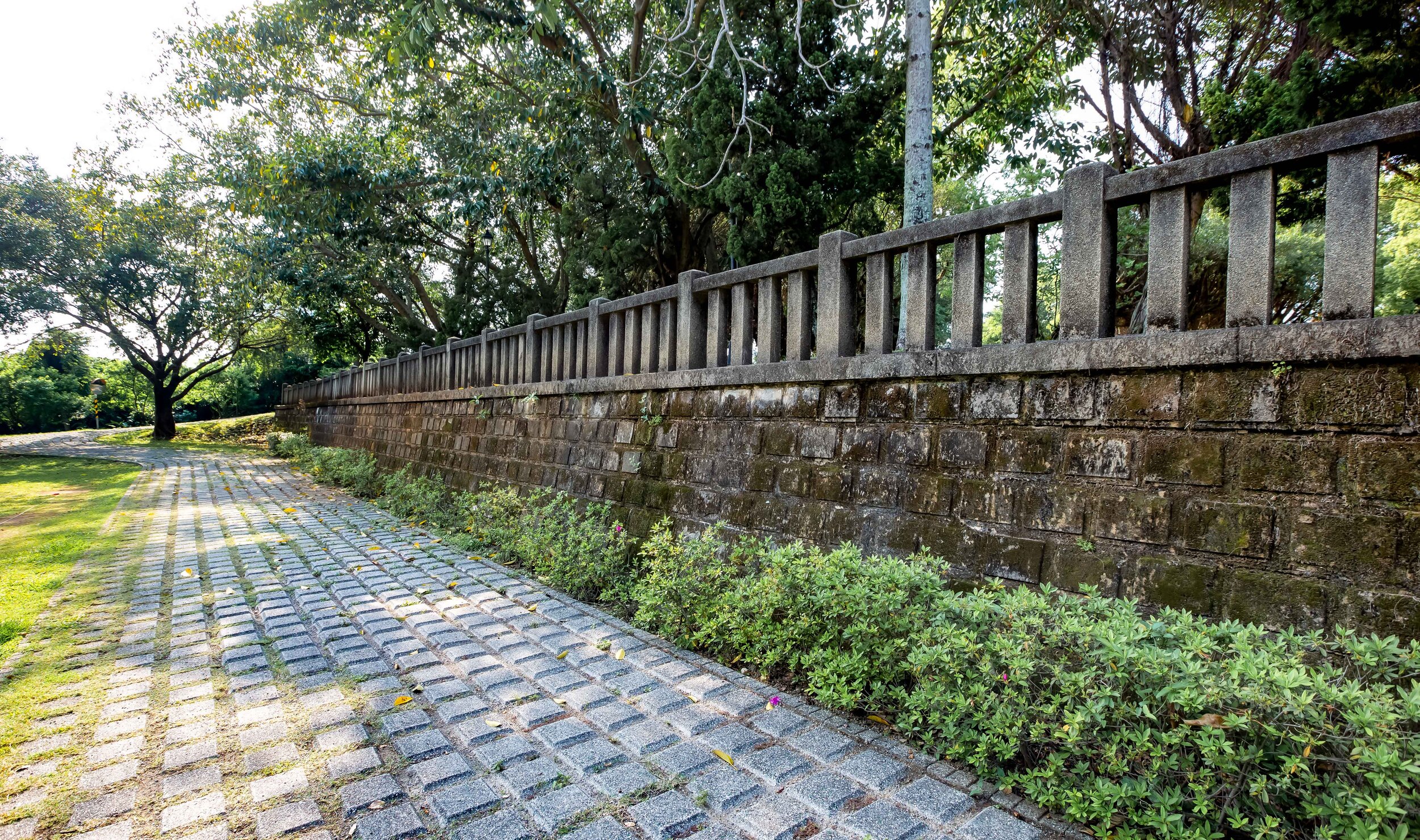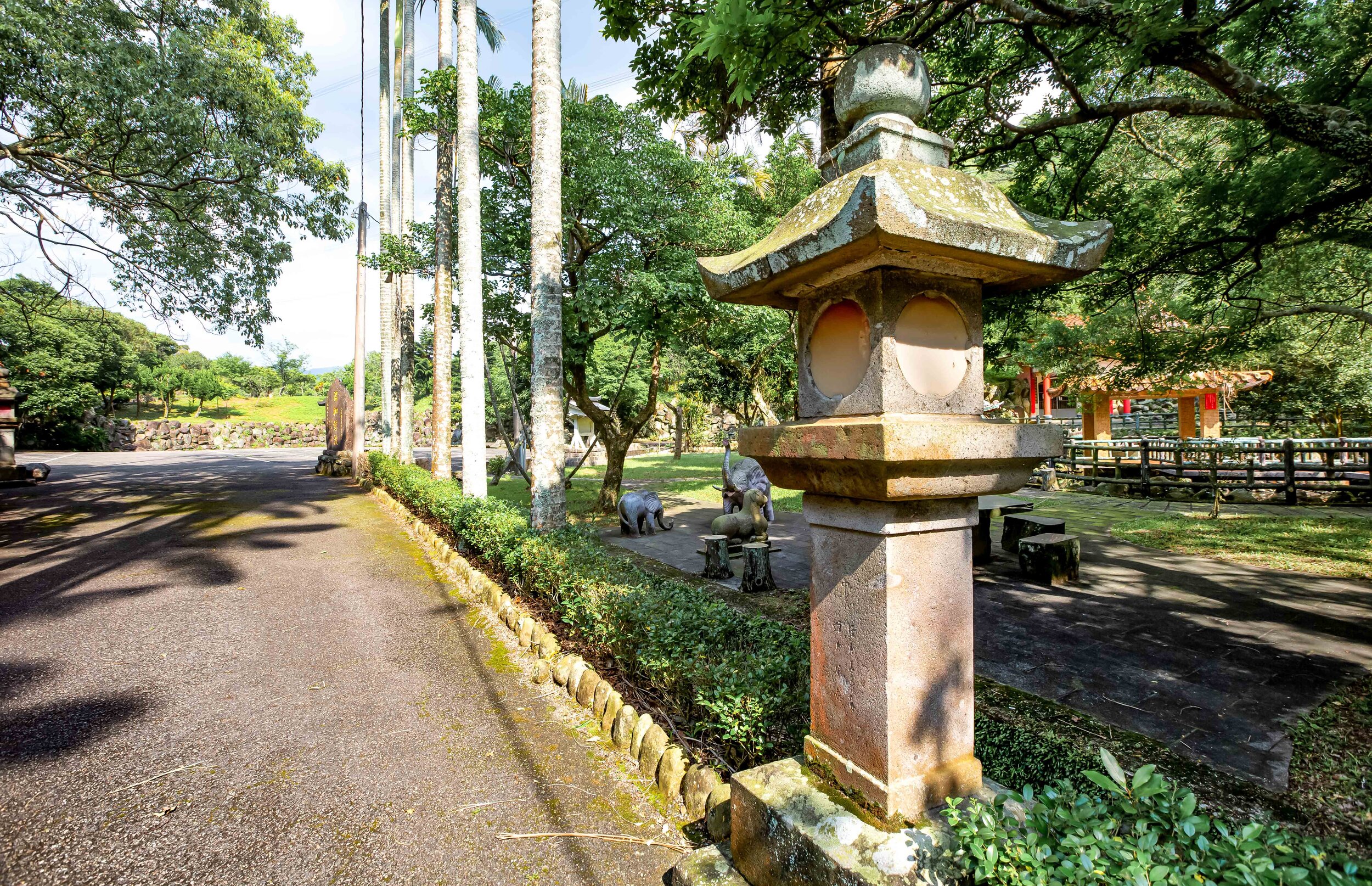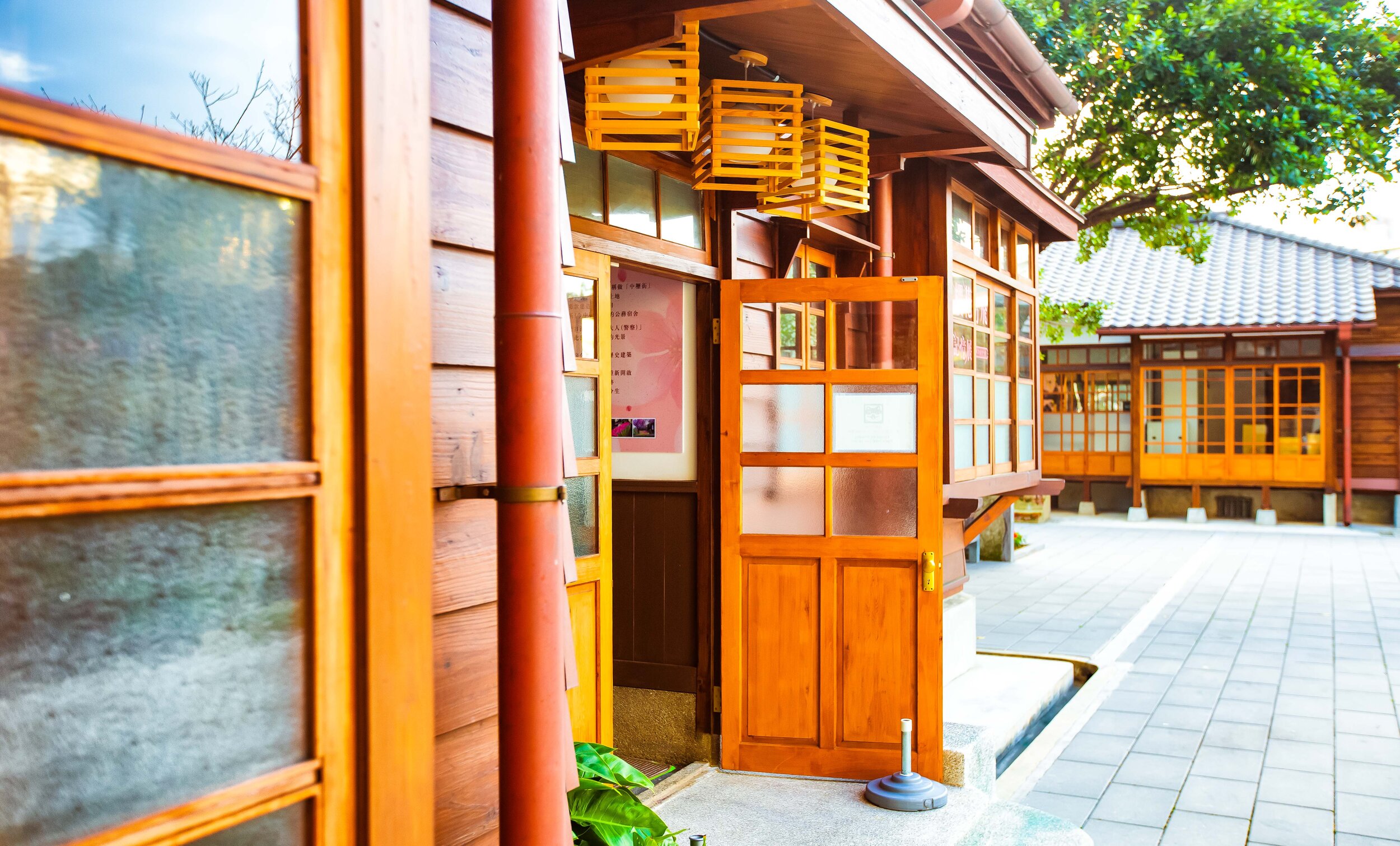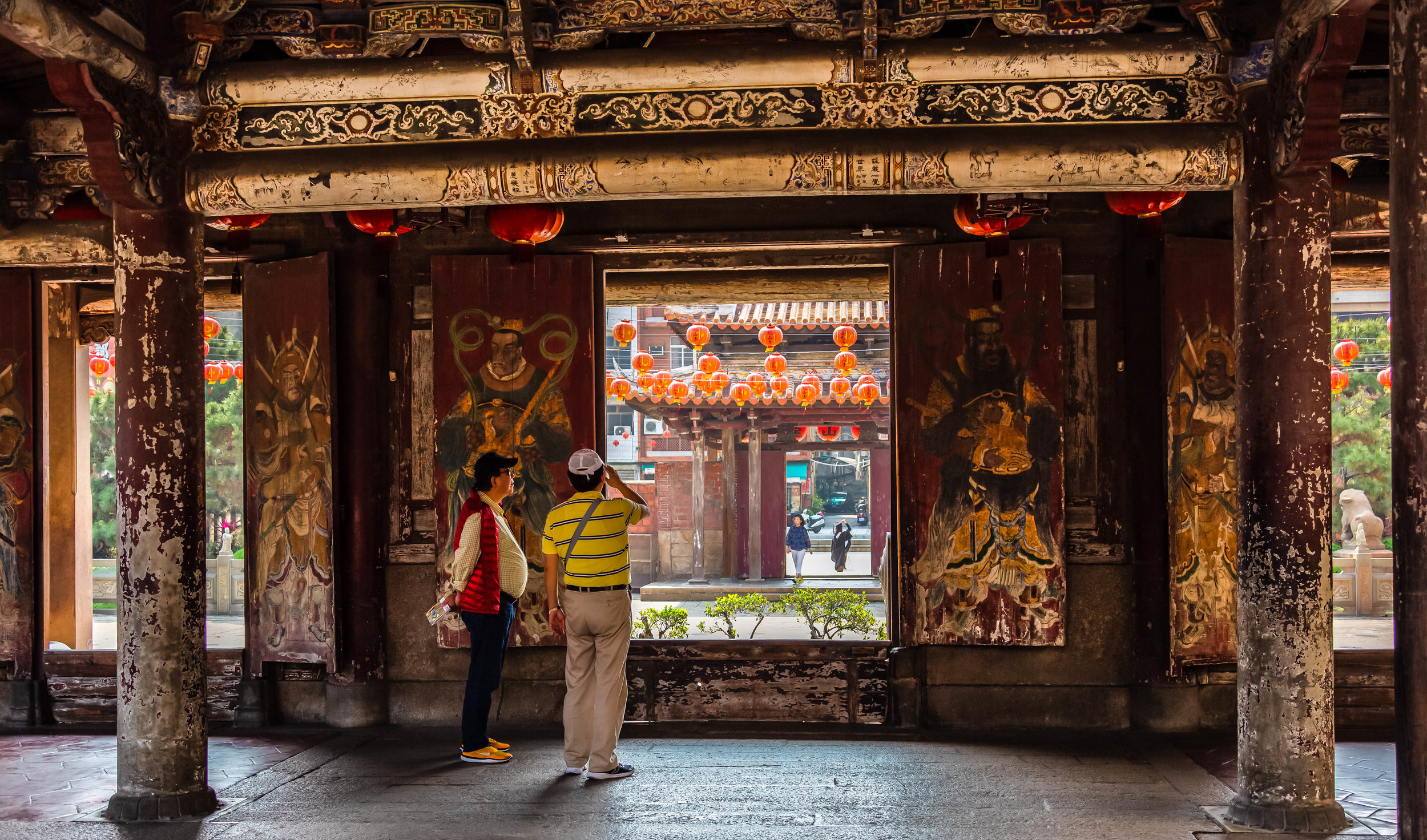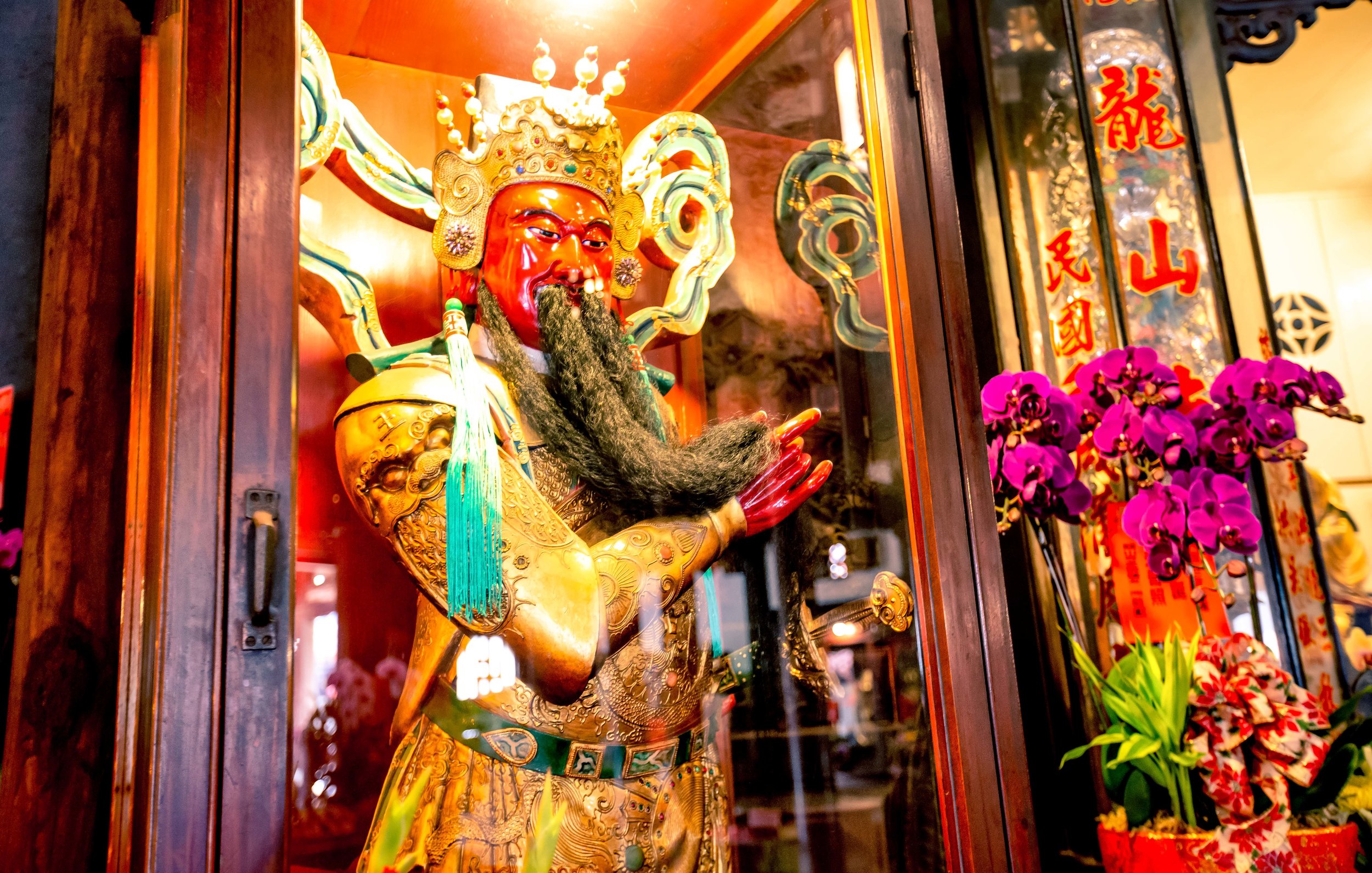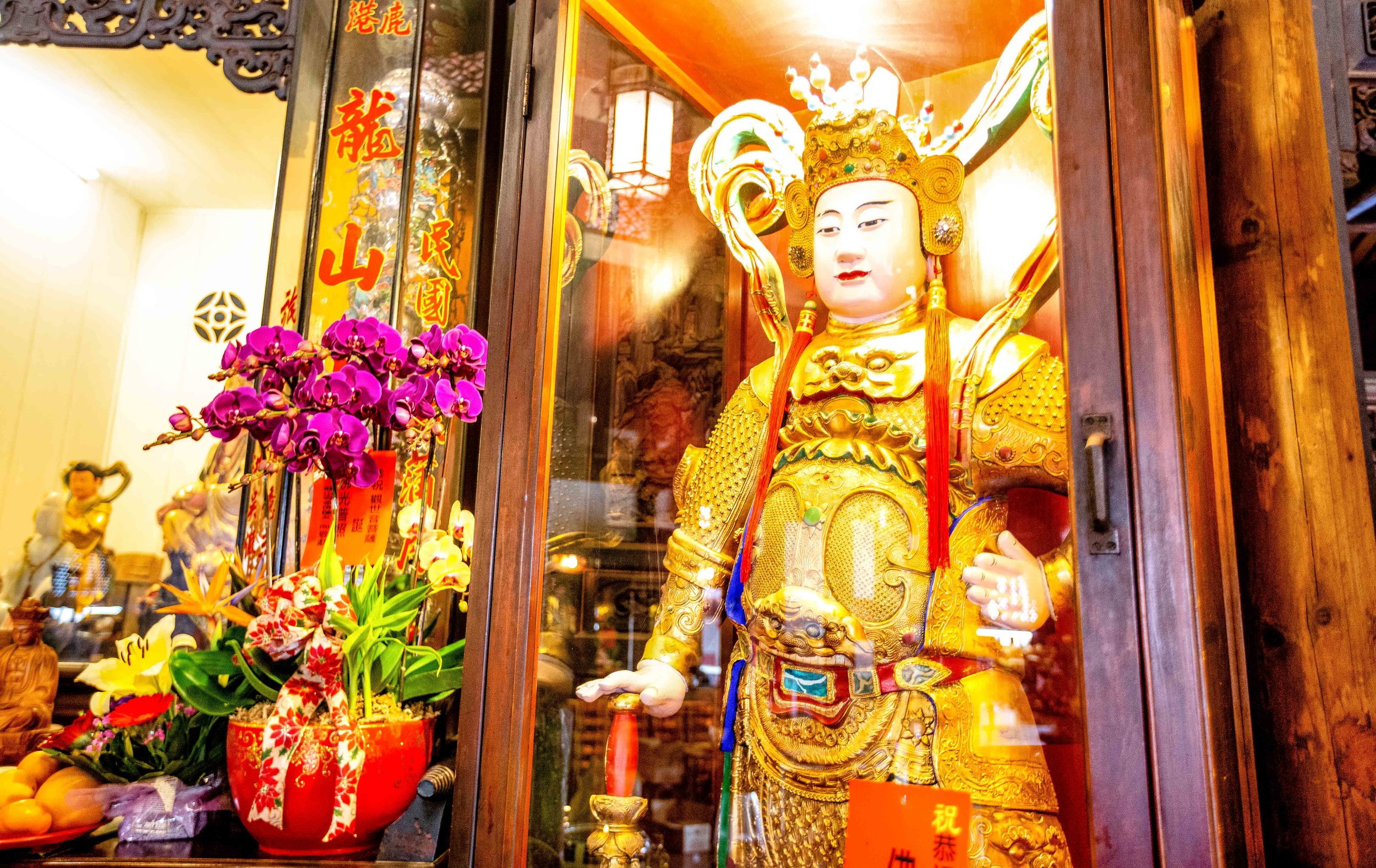A few months ago, when I wrote my annual ‘Year in Review’ post for 2019, I mentioned that I was still unsure as to what my personal project for the new year would be - At the time there was a lot going on in the world and I felt a bit odd because I’m usually on the ball with these things.
I also always have a long list of places that I plan to visit, take photos of and write about.
Looking back at that post now, I think I was probably a little naive.
Who knew that 2020 was going to turn out to be such a dumpster fire?
As I’m posting this, we’re eight months into the year and almost every country in the world has been turned upside down thanks to the Coronavirus.
As a side note, I’ve kept busy over the past couple months writing about all the wonderful places I visited in Vietnam and Thailand during my trip in January (just before things got out of hand), but I’ve also been putting a lot of consideration into what I’d focus on once it became safe to freely travel again.
I think I’ve finally figured that out.
After receiving numerous emails and requests, I visited the National Revolutionary Martyrs Shrine in Taipei to get some photos and then wrote a blog about it.
If you’ve read the post, you’re probably aware that I’m not particularly a fan of these places (for various reasons), but while doing research for the post, I was reminded that the majority of the “Martyrs Shrines” that exist in Taiwan today sit on the site of a former Shinto Shrine from the Japanese Colonial Era.
Considering that I’ve already written about the Taoyuan Shinto Shrine, Yilan Shinto Shrine, and the Tungxiao Shinto Shrine, all of which have been converted into Martyrs Shrines, I figured that I’d make one of my personal projects for the year link together with the other (ongoing) work I’ve been doing related to historic buildings from the Japanese Colonial Era.
It’s important to note that only in special cases do the Martyrs Shrines of today have much left with regard to the original design and layout of their Shinto Shrine days.
In most cases almost everything was torn down and new buildings were constructed in their place.
Fortunately though, we can still find evidence of the history of these locations through the layout of the grounds, the trees planted on the site and with the presence of objects like the the stone lion guardians, lanterns, etc.
By my count, there are currently fifteen Martyrs Shrines in Taiwan that were once Shinto Shrines and I’ve only covered four of them, which means I have another eleven to visit!
Over the next few months, I plan to travel around the country to check them out while also visiting some of the other spots on my long list of places to visit.
To start, I’m going to introduce the site of the former Tamsui Shinto Shrine (淡水神社), which has since been converted into the New Taipei Martyrs Shrine (新北市忠烈祠).
I’ll briefly talk about the history of the Shinto Shrine (with some historic photos) and then introduce the Martyrs’ Shrine that exists on the site today.
The Martyrs’ Shrine isn’t exactly what most would consider a major tourist attraction (by itself), but it conveniently sits on a picturesque mountainside overlooking the Tamsui River (淡水河) and is fortunate to be neighbors with a handful of other historic tourist destinations that are within walking distance.
The shrine is known for its natural beauty and while it may not be busy with tourists, it has become a preferred setting for local photographers, who use the beautiful Japanese-era stonework and the pine trees as a backdrop for wedding photos.
Tamsui Shinto Shrine (淡水神社)
Constructed on the Tamsui Shinto Shrine (たんすいじんじゃ) started in 1936 (昭和10年) and was officially opened three years later in 1939 (昭和14年).
Often considered one of the prettiest of all the Shinto Shrines in the greater Taipei area, the shrine overlooked the beautiful Tamsui River with Guanyin Mountain (觀音山) in the distance.
Highly regarded for the way it harmoniously blended with the natural environment, the shrine earned the title as one of the ‘eight scenic spots’ in Tamsui (淡水八景) in part thanks to the sando (參道), or the “walking path” which was lined with pine trees (something that thankfully still exists today).
Not only was the walking path lined with trees on either side, but also a collection of stone lanterns (石燈籠) that lit the way at night. The walking path also had a Torii gate (鳥居) at both ends with two larger stone lanterns (大石燈籠) at the top of the hill.
The torii, which you can see from the historic photos below were both quite large and beautiful.
Once you reached the top of the hill you’d find a Purification Fountain (手水舍), where you’d be required to perform a cleansing ritual before entering the shrine.
On the opposite side of the fountain was the Shamusho (社務所), which acted as the Administration Office and living quarters for the priests who lived at the shrine.
As you continued along the path up the hill, you’d be met with a stone wall and a set of stairs guarded by two ‘Komainu’ stone lions (狛犬) with another Torii gate at the top.
Interestingly, although the lions and gate have since been replaced, the layout remains the same today.
Once you passed through the Torii gate at the top of the stairs you’d find yourself in a courtyard full of trees with another gate known as the Middle Gate (神門) acting as the entrance to the shrine.
The Middle Gate was constructed of wood and was known for its traditional Kirizuma-zukuri gabled roof (切妻造) design that surrounded the innermost part of the shrine.
Once you passed through the Middle Gate you’d find the “Haiden” or “Worship Hall” (拜殿) in the middle of another courtyard.
Even though there are few pictures of the shrine available, what we do have shows us that the architectural design of the building was similar to that of what we can see today at the Taoyuan Shinto Shrine (桃園神社) with its impressive ‘Irimoya’-style hip-and-gable roof (入母屋造).
Unlike Chinese-style places of worship, you wouldn’t have found statues of the gods inside the worship hall, instead you would find a simple shrine with a mirror and behind that a door that led to the Honden (本殿) or “Main Hall”, which is traditionally off-limits to anyone except for the priest who resided at the shrine.
The deities that were enshrined in the Honden were Prince Yoshihisa (能久親王), Emperor Meiji (明治天皇), Ōmononushi (大物主命) and Emperor Sutoku (崇德天皇).
In fact, most of the over two hundred Shinto Shrines constructed during the colonial era were home to shrines dedicated to Prince Kitashirakawa Yoshihisa, who was the first member of the Japanese royal family to pass away (outside of Japan) in more than nine hundred years. He died from what is believed to be malaria in Tainan in 1895, the same year that Japan took control of Taiwan.
Link: Prince Kitashirakawa Yoshihisa (Wiki)
I suppose you could say, the unfortunate thing about this beautiful shrine was that it was officially opened only a few short years before the Japanese Colonial Era came to an end.
When the Second World War ended in 1945, Japan was forced to give up its control of Taiwan, which was then ambiguously awarded to the Republic of China.
In 1953, the shrine officially became the Taipei County Martyrs Shrine (台北縣忠烈祠). which retained the original buildings until 1975 when it was bulldozed and converted into a Chinese-style shrine.
Today all that remains of the original shrine (in this location) are the beautiful pine trees that once lined both sides of the walking path, the stone wall, guardian lions (although they were replaced at some point) and the overall schematic design of the landscape.
Hsing-Chong Temple (淡水行忠堂)
The good news is that not everything from the former Shinto Shrine has been destroyed.
When the last remnants of the Tamsui Shinto Shrine were torn down in 1975, several of its pieces were transferred to nearby Hsing-Chong Temple (行忠堂) in the mountains of Tamsui.
The people at the temple were able to preserve sixteen of the original stone lanterns from the walking path, the two larger stone lanterns, the purification fountain and the original information board (揭示場) which you’ll often find at the entrance of shrines.
The amazing thing is that during the 1970s, the government was pushing an extreme anti-Japan policy that sought to demolish anything from the colonial era that was deemed unnecessary.
The fact that this small temple was able to preserve as much of the original Shinto shrine as they were was no small feat. The other amazing thing is that in order to preserve all of these pieces of the shrine, they had to find a way to transport them to their temple in the mountains.
You might be thinking that’s not really that big of a deal, but the thing you need to realize is that getting around back then wasn’t as easy as it is today.
This problem was exacerbated by the fact that the lanterns would have weighed thousands of kilograms.
With a seven kilometer distance between the Shinto Shrine and Hsing-Chong Temple, a mixture of ox-pulled carts, rudimentary cranes and trolleys were used in addition to the the help of dozens of people to bring the pieces of the shrine to their new home where they can still be enjoyed today.
Why would this temple in the mountains of Tamsui, which is dedicated to Guan Gong (關聖帝君), want to preserve these pieces of the Shinto Shrine you ask? Well, thats not really very clear.
Your guess might be as good as mine.
When I enquired with the caretakers of the temple as to why they’d preserve these pieces of the Shinto Shrine, they replied: “I’m not really sure, but probably because they were pretty and free.”
Taiwanese temples can sometimes be a bit eccentric and if you visit this specific temple, you’ll see that it’s a bit odd compared to others in terms of its design and decoration.
Address: #18 Chung-shan village Danshui District, New Taipei City
(新北市淡水區忠山里18號)
New Taipei Martyrs Shrine (新北市忠烈祠)
You’ve read this far and might still be asking yourself: “What exactly is a Martyrs Shrine?”
That’s okay - I’ve visited quite a few of these shrines and I still find myself asking this question.
To put it in simple terms, Martyrs Shrines in Taiwan are more or less war memorials for the fallen members of the Republic of China Armed Forces.
There are over twenty of these shrines throughout Taiwan (and the outlying islands), each of which with an interesting history - which doesn’t necessarily relate to anything to do with the Martyrs Shrine itself.
Its also important to note that these shrines actually have very little to do with “Taiwan” as the majority of the ‘martyrs’ worshipped in the shrines were soldiers who died during the various conflicts in China from the founding of the Republic of China in 1912 until the 1950s.
That being said, even though the Republic of China has been at peace for several decades, if a member of the Armed Forces passes away in the line of duty, they are also afforded the respect of becoming a martyr.
If you’d like more detail about these shrines, I recommend taking a few minutes to check out my post about the National Revolutionary Martyrs Shrine, which explains the purpose of these shrines.
As I mentioned above, of the twenty or so Martyrs Shrines in Taiwan, the vast majority of them are located on the former site of (or are repurposed) Shinto Shrines that dates back to the Japanese Colonial Era.
Ironically, in a few cases, some of those Shinto Shrines were Japanese-style Martyrs Shrines dedicated to Taiwanese people who passed away in the line of duty.
Which if you think about it certainly has a lot more to do with “Taiwan” than the Martyrs Shrines of today do.
The New Taipei City Martyrs Shrine, as I’ve likewise already mentioned, sits on the site of the former Tamsui Shinto Shrine (1939 - 1953), which was abandoned shortly after the Japanese relinquished control of Taiwan.
In 1953, the shrine was incorporated into the network of Shinto Shrines that were being preserved and converted into war memorials for the Republic of China.
It goes without saying that when the Chinese Nationalists took control of Taiwan that they wanted to rid the island of the memory of its colonial past. When they arrived, Taiwan was home to over two-hundred Shinto Shrines, but only a few of them were saved from demolition and vandalism by being “preserved” and converted into Martyrs Shrines.
In 1953, when the Taipei County Martyrs Shrine (台北縣忠烈祠) was established, they initially left the buildings as they were, but removed any reference to the original shrine as well as the deities inside.
For the next two decades, not much changed at the shrine which kept its original Japanese-style design.
In 1975, however it was decided that the original shrine would be demolished and a Chinese palace-style building would be constructed in its place.
It’s important to note that even though the original Shinto shrine was demolished, the grounds maintain much of the original landscape design and the Japanese adherence to harmony with the natural environment.
So today, when you approach the shrine you’ll still find the same set of stairs and the stone wall that date back to the days of the Shinto Shrine. The arched gate at the top of the stairs however has been converted into a white Chinese-style ‘pailou’ gate (牌樓) that has a plaque in the middle that reads “New Taipei City Martyrs Shrine” (新北市忠烈祠).
Note: The “Taipei County Martyrs Shrine” was renamed the “New Taipei City Martyrs Shrine” in 2011 when the county was converted into an amalgamated super city.
Once you’ve passed through the gate there is still the same path that leads you to the Middle Gate (中門). which is constructed using the same Chinese-palace style as the rest of the complex and has a wall that wraps around the rest of the shrine area.
When you pass through that gate, you’ll see the Main Hall (主殿) directly in front of you, but you’ll also automatically be met with a giant tree on your left that is yet another leftover from the days of the Shinto Shrine. Likewise, with the exception of the pathway, the rest of the area is covered with well-maintained grass, which isn’t all that common in Taiwan.
During my visit, the grassy courtyard area on the inside of the gates were the resting area for a couple of local egrets which were enjoying the sun at the quiet shrine. I’m guessing that their presence probably means that they feel comfortable in the area due to a lack of visitors to bother them.
The Main Hall of the Martyrs Shrine is a simple building with a shrine room and two rooms to the side.
The room to the right has some benches and a television which plays an information video about the shrine and its history, while the room to the left is more or less used for storage.
One of the main differences between this Martyrs Shrine and the National Revolutionary Martyrs Shrine in Taipei is that you are able to simply walk into the main hall and check out the shrine.
The room is white and has Republic of China iconography on the walls and the ceiling, in addition to two sets of flags on the left and right side of the main shrine.
The altar consists of a large collection of spirit tablets (牌位) dedicated to the ‘martyrs’ from the various conflicts that the Republic of China’s Armed Forces have taken part in over the past century.
Link: Spirit Tablets (Wiki)
The set up of the shrine is simple and clean, without all of the pizazz that you’ll find at typical places of worship in Taiwan. In this way, it makes the place a lot more peaceful, but it is a war memorial, after all.
While there isn’t really all that much to see in the shrine room, I recommend walking around the to the back of the hall where you’ll find a grassy tree-covered rear courtyard.
This is the area that used to be home to the Shinto Shrine’s “Honden” (拜殿) and was once off-limits.
Today it’s probably a perfect place for a picnic.
Getting There
Address: No. 31, Lane 6, Section 1, Zhongzheng Road, Tamsui District, New Taipei City
(新北市淡水區中正路一段6巷31號)
The New Taipei City Martyrs Shrine is close to one of northern Taiwan’s most popular tourist destinations, the Tamsui Old Street (淡水老街).
I’m not exaggerating when I say that tourists who take a day-trip to the area are extremely spoiled for options.
In Tamsui, not only will you be able to enjoy the historic riverside and the ‘Old Street’, you’ll also be able to feast on lots of local snacks and have the opportunity to visit a number of historic and cultural destinations in close proximity to the MRT Station.
That being said, the Martyrs Shrine isn’t really all that close to the MRT Station.
Sure you can walk from the station to the shrine, but with so much to do in the area, you’re much better off saving time by hopping on a bus, checking out the shrine, and then moving on to check out some of the other amazing places of interest in the area.
With so much to see, you’re also going to have to do a bit of research beforehand to decide where to spend your precious time!
If you have a car or scooter, getting to the shrine is easy.
Simply input the address provided above into your GPS or Google Maps or use the map provided here.
If you’re driving a car or a scooter, you won’t have to worry, there is an ample amount of parking near the shrine, so you should be able to easily find a spot.
If you’re like most tourists though, you’ll probably make use of public transportation.
To take the bus to the shrine, simply exit Tamsui MRT Station (淡水捷運站), the terminal station of the Taipei MRT’s Red Line (紅線) and walk to the large bus stop across the street.
To do this, you’ll have to walk to the first walk to the large crosswalk and then backtrack a bit once you’ve crossed the street. The bus stops are directly in front of a gas station and are pretty hard to miss.
From there you can take the five minute bus ride to the shrine on bus #757, #857, #880 or Red 26 where you’ll get off at the “Huwei Fort (Martyrs' Shrine Court)” (滬尾砲台(忠烈祠球場)) bus stop.
Once you’ve gotten off the bus you’ll see a sign for the Martyrs Shrine and all you’ll have to do is walk up the historic and beautiful tree-covered hill to the entrance.
In terms of the other things in the area that you can see, you’ll find the Hobe Fort (滬尾礮臺) and the Drop of Water Memorial Hall (一滴水紀念館) next door to the shrine. Nearby you’ll also find the beautiful Fort San Domingo (淡水紅毛城), the Tamsui Customs Wharf (淡水海關碼頭), the Taipei Customs Officers’ Residence (小白宮) and a beautifully restored Japanese home overlooking the river known officially as “Former Residence of Tada Eikichi” (多田榮吉故居).
In addition to these spots, there are a number of places to check out along Tamsui Old Street including the historic Tamsui Presbyterian Church, Huwei MacKay Hospital, Fuyou Temple (福佑宮), Qingshui Temple (淡水清水祖師廟), Tamsui Longshan Temple (淡水龍山寺), Lovers Bridge (情人橋), etc. There’s also the boat ride across the Tamsui River to Bali Old Street (八里老街).
Its safe to say that the New Taipei City Martyrs Shrine probably isn’t high on the list of destinations for your average tourist. If you’re visiting the Hobe Fort or any of the spots nearby though, I’d say that a visit to the shrine is well worth an extra few minutes of your time.
That being said, I’ve been living in Taiwan for a long time and the only reason I wanted to visit was because it was the site of a former Shinto Shrine. Its definitely a nice option if you’re looking for a tranquil spot to take some photos of a pretty shrine without a million other people getting in the way!
